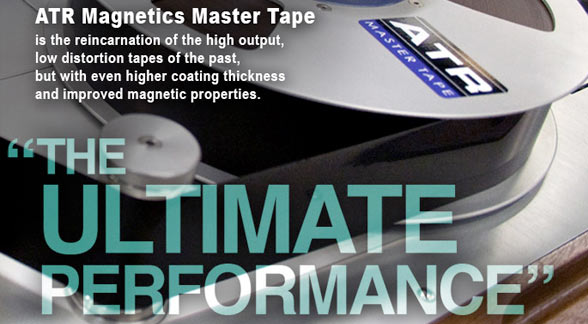Making Copies…Analog Style Part II
This post is a continuation from yesterday. We’re talking about the concept of analog tape “masters” and copies of masters.
Here the way it works and the terminology that professionals use:
1. There is a SESSION MASTER that is the first generation tape that contains the unedited raw session performances. This may be a 2-channel stereo recording or a multichannel (4 or more) session tape. This is really the only tape that can be legitimately referred to as the “master tape”. All subsequent derivations are copies. An analog tape cannot be a “master” and a “copy”. It is an oxymoron to say something is a “Master Copy”.
2. The SESSION MASTER is usually copied to something called a SAFETY MASTER. All analog tape copying results in a loss of dynamic range…the noise floor comes up. The increased noise floor is usually 6 dB higher using 1/4″ tape machines. It is possible to get better results by using wider tracks, which is why the Tape Project uses a 1″ 2-track machine as their production master.
3. In my experience, I’ve always edited the SESSION MASTER. This means slicing the tape with a razor blade and sticking things back together in the right sequence with the right takes. I’ve spent literally hundreds of hours doing this kind of analog editing and am very confident that I won’t screw things up or lose a valued piece of tape (although I could tell you a couple stories that caused some major problems in a few instances). The output of this process is called the EDITED MASTER. If an engineer decides to do this to the SAFETY MASTER COPY, then the result is know as the EDITED SAFETY MASTER.
4. Then the EDITED MASTER is sent through the mastering process when EQ and dynamics are “optimized”. This results in another copy, which gets us to a second or third generation copy (with the associated increase in the noise floor and loss of high end frequencies). The output of the mastering studio is called the “PRODUCTION MASTER” because it is used to create the parts used in the production process or replication stage of the project.
5. The PRODUCTION MASTER is also copied for safety (known as the PRODUCTION MASTER SAFETY copy). If you’ve been keeping track we’re now down to a third generation copy (18 dB of additional noise has been added to overall sound).
6. From the PRODUCTION MASTER a disc-mastering engineer cuts a lacquer master that will be used to create the mother and the stampers for use in vinyl LP production. The disc-cutting engineer applies additional compression and tonal modifications (RIAA curve and more) so that the grooves can successfully cut in the lacquer and the vinyl LPs stamped.
So one of the benefits of analog tape is the avoidance of a generation or two of tape copying (and the associated increase in the noise floor) because customers can purchase a tape that hasn’t been run through the disc mastering stage. You can’t avoid the actual mastering stage, so the best you can get is a third or fourth generation copy.
Tomorrow, I’ll run through the various production paths that purveyors of analog tape have to accept when they release an analog master.

